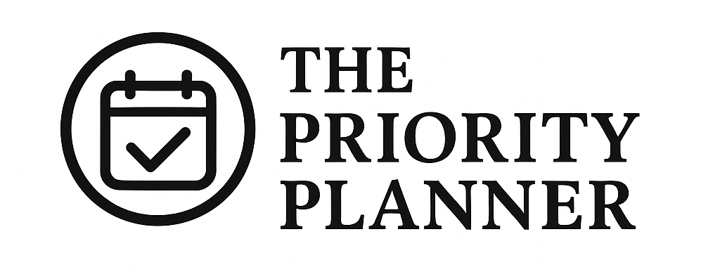Managing Priorities in a World Full of Disruptions – 7 Steps to Claim Back Control
Managing your to-do list used to be as simple as jotting down a few tasks on a sticky note. Today, it feels like wrangling a wildfire. Everywhere you look—your phone, your inbox, your Slack channels—something’s demanding your attention. No wonder prioritizing feels next to impossible. Here’s what’s changed, and how you can wrest back control.
The Avalanche of Inputs
Ten years ago, you might’ve scrolled through an RSS feed or checked email twice a day. Now you juggle:
Social feeds (Instagram, TikTok, LinkedIn…)
News alerts (global politics, market shifts, viral trends)
Messaging apps (WhatsApp, Teams, Slack)
Streaming notifications (new releases, live events)
Every ping makes you feel you’re missing out. Your brain spends more time triaging interruptions than doing meaningful work.
Work and Home Aren’t Separate - “Work-from-home” blurred the lines permanently. Your living room couch became your desk; your “lunch break” is a frantic scroll through notifications. Without clear boundaries, every hour is fair game for work demands—and every demand jostles your real priorities aside.
The Tyranny of Urgency - Those Slack “mention” pings? They come with an unspoken deadline: reply now. Urgent doesn’t always equal important, but when everything feels urgent, nothing truly is. You bounce from one mini-task to another, never getting deep enough to tackle major projects.
Tool Overload—Productivity’s Paradox - There’s no shortage of apps promising zen-like focus: to-do lists, Kanban boards, habit trackers, Pomodoro timers. Ironically, installing and learning each new tool becomes another task on your plate. You spend more time organizing tasks than completing them.
FOMO Meets Goal Creep - Seeing peers start side hustles, learn an instrument, train for marathons, or launch podcasts triggers a pressure cooker: “If they can do it, why not me?” Before you know it, your ambition list has ballooned. Every unchecked item feels like a personal failure, even when the original goals weren’t yours to begin with.
Shallow Work Is King - Deep work—writing an in-depth report, coding a feature, crafting a marketing strategy—takes uninterrupted focus. But back-to-back meetings, group chats and multitasking eat into those golden hours. You end each day feeling busy but not accomplished.
Change Is the Only Constant - Markets shift, algorithms change, new regulations drop, global events upend supply chains. What was top priority last quarter might be obsolete today. Constant pivots force you into reactive mode—adjusting plans instead of executing them.
7 Steps to Reclaim Control
You can’t stop the tidal wave of inputs, but you can surf it better. Try these tactics:
Define Your “North Star”
Pick one overarching goal per quarter. Everything else either supports it—or gets cut.Batch Your Inputs
Check email, social and news at set times only. Turn off non-essential pings outside those windows.Time-Block Your Deep Work
Reserve 60–90-minute slots for focused tasks. Treat them like doctor’s appointments: non-negotiable.Adopt a Single Priority-Matrix
Use the Eisenhower grid: urgent vs. important. Review it each morning and commit to at most three “important and not urgent” tasks.Set “Office Hours”
Whether remote or in person, declare specific times when you’re available. Outside those windows, you’re off-duty.Automate and Delegate
Automate recurring small decisions (meal delivery subscriptions, preset routines) and delegate what you can. Free up your decision-making energy for higher-impact work.Weekly Review Ritual
Spend 15 minutes every Friday assessing wins, misses and bottlenecks. Adjust your plan for the week ahead—don’t let chaos write your agenda.
Managing priorities isn’t about squeezing more tasks into the day; it’s about protecting your finite time for the things that move the needle. By cutting noise, batching attention and anchoring your actions to a clear goal, you’ll find that not only do you get more done—you get the right things done.
Ready to reclaim your focus? Start by closing unnecessary tabs, scheduling your first deep-work block, and letting go of that “nice-to-have” to-do list. Your future self will thank you.
